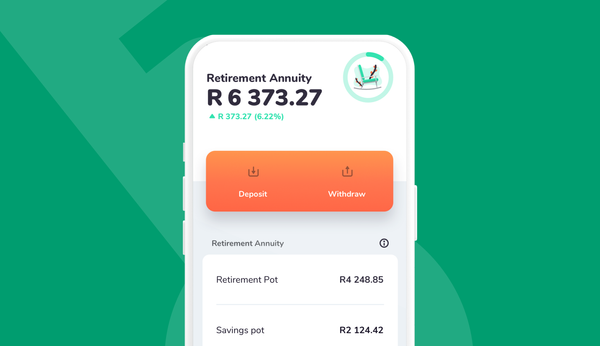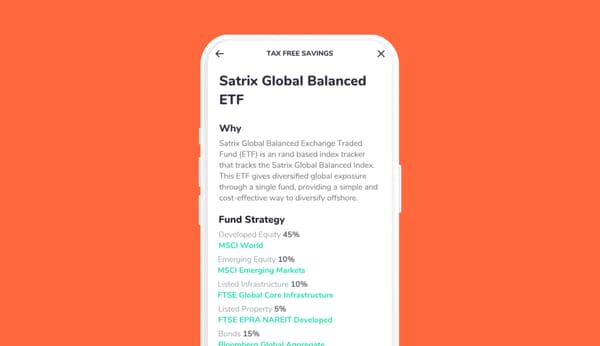Sometimes it’s by making mistakes that we learn the greatest lessons. But when it comes to our own hard-earned money, costly mistakes just hurt that much more.
While we can’t help you avoid all the mistakes when it comes to investing (and that’s not a bad thing), we asked our Franc investors what mistakes they’d made on their investing journey, summarised them down to the top four, and weighed in on how you, the reader, can avoid them.
Here were the top four investing mistakes to avoid, according to our Franc investors:
Mistake #1: “I lost money on a single stock.”
Mistake #2: “I took the first step in learning, but never actually started investing.”
Mistake #3: “I’m investing without understanding what I’m doing and why I’m doing it.”
Mistake #4: “I can’t stick to a budget.”
Do any of these resonate with you? Then read on: our Associate Product Manager, Anelisa Maswana, asked our COO and co-founder, who has over 20 years financial services experience and time in the market, to give us his advice.
Mistake #1: “I lost money on a single stock.” 😱
“If you hold a number of shares, some are going to do badly, some are going to do well,” says Sebastian Patel, COO and co-founder at Franc. “In this scenario, I assume the person bought one share that they heard being spoken about around the braai or on Twitter/X and thought this was going to be ‘it’ for them, but it did badly. That’s why we always talk about the importance of diversification.”
“When you don’t diversify, like in the case of only buying one type of share, it’s like throwing a dart and hoping that the stock you picked does well. You’re looking at a 50/50 chance of it working out.
“Many people aren’t experts; they don’t know which stocks to pick. That’s why we always recommend investing in a diversified ETF (exchange-traded fund), especially for beginners, which gives you exposure to local or offshore stocks, so you don’t have to stock pick,” Seb explains.
On top of investing in an ETF or equity in the local and international markets, Seb advises having an emergency fund in a low-risk investment or savings vehicle (like Franc’s cash fund) as a start in diversifying your portfolio.
Mistake #2: “I took the first step in learning, but didn’t actually start investing.” 🎓
“At least they started the learning process; that’s important. What happens to a lot of people is they start learning about investing, but get overwhelmed by how complicated the process of investing can be – at least on some platforms,” says Seb. “If you’re exploring an investment platform and you see many shares and lots of choice, and it’s difficult to navigate, then it’s natural that you’re going to lose interest.
“That’s the barrier we’re trying to break down at Franc: if someone is still learning about investing, and they download and explore the Franc app and it’s an easy process, then it’s more likely they’ll start the journey.”
Another tip to keep up the momentum, and go from learning to investing? Define your goals.
“You need to have a reason why you’re investing. If you don’t have a reason, it’s going to be more difficult to motivate yourself to invest your money when things get tough, or when you have that extra couple of hundred rands that you would prefer to go out with,” explains Seb.
So set a goal, know what you’re investing it for, and have a clearer picture to aim towards and more motivation to start. Read more about investment goal-setting here.
Mistake #3: “I’m investing without understanding what I’m doing and why I’m doing it.” 👀
This is the flip side of the previous ‘mistake’, and it’s a common one: according to the latest study, only 42% of South African adults are financially literate, and sadly, that number is declining.
While we’ve created Franc to make it easy to start investing with very little knowledge, we always advocate for empowering yourself with knowledge around investing and managing your money so you better understand the process.
This is particularly important when you’re investing in higher-risk, more volatile assets, like shares.
“We see it often: people make an investment into the stock market, whether that’s through an ETF or unit trust, and when something happens and the market goes down, they panic and sell,” says Seb. “We saw that happen during COVID when markets went down 40-50%, and people stressed and sold their shares. They lost out on the considerable growth that happened afterwards.”
“When it comes to something like the stock market, and especially bitcoin, which can go up and down regularly and dramatically, you need to have a long-term mindset – preferably 7-10 years – and understand how it works. If you don’t, you’re likely to panic and lose the value of your investment.”
Bottom line: make sure you’re learning as you invest so you understand the process.
Here are some resources you can use:
- Take our financial literacy test to get a sense of where you’re at.
- Start going through our Franc Academy lessons to get a good foundation of money and investing (get the video versions over here)
- Subscribe to our fortnightly Francly Speaking newsletter for the latest blog posts, videos and resources to help you brush up on your knowledge as you invest.
- We’ve vetted the financial content creators on the social platforms and chosen our top 9 financial content creators to follow to get your daily dose of financial tips, experiences and opinions.
Mistake #4: “I can’t stick to a budget.” 💰
“Your budget needs to be realistic. If it’s not realistic, you’re not going to follow through on what you’ve budgeted,” emphasises Seb.
That starts with understanding where your money is going right now, before you start planning where your future money should go. Start tracking your expenses on a month-to-month basis, or plug into an app that does it for you automatically, like 22Seven.
Once you have a good idea of where your money is going, you can start to work on adjusting your cash outflow to better match the 50/30/20 rule: that’s the budgeting rule financial fundis swear by to make sure you’re saving and investing enough.
Here’s what the 50/30/20 budgeting rule entails:
- 50% of your income should go to must-have expenses
- 30% of your income can go to nice-to-have expenses
- 20% of your income should go to paying off debts, saving and investing
Sticking to your budget is as much about the planning as it is about the consistent checking in. Make a regular weekly or monthly date with yourself to check in on your finances and see where you’re over-spending or saving. It might feel tedious at first, but you’ll see: it becomes addictive!










![How & Why You Should Do a Financial Reset [+ downloadable financial reset journal]](/blog/content/images/size/w600/2024/12/Setting-goals-for-the-year.png)